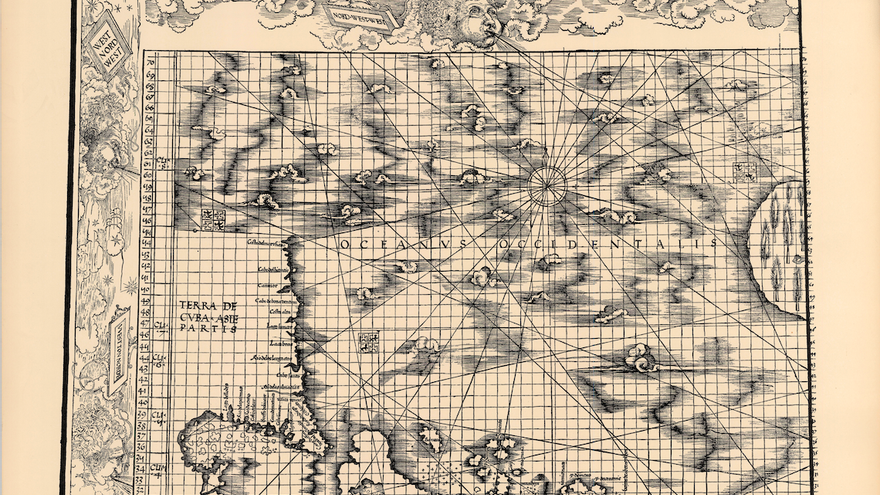
![]() 14ymedio, August 5, 2019 — When Columbus arrived in the “New World,” he called it Cuba. He didn’t know then that he was on an island and believed that it was part of Asia. In 1507 the German cartographer Martin Waldseemüller made a great map in which the word America appeared for the first time to designate the lands explored by Vespucci, but years later rectified it and ended up changing it to Cuba.
14ymedio, August 5, 2019 — When Columbus arrived in the “New World,” he called it Cuba. He didn’t know then that he was on an island and believed that it was part of Asia. In 1507 the German cartographer Martin Waldseemüller made a great map in which the word America appeared for the first time to designate the lands explored by Vespucci, but years later rectified it and ended up changing it to Cuba.
Waldseemüller began to doubt Vespucci’s role in the New World and called the continent “terra incognita,” with a note that indicated: “This land and the adjacent islands were discovered by the Genoese Columbus, by mandate of the king of Castile.” The cartographer thus joined the idea that Columbus had reached the continent, so when he made the Carta Marina in 1516 he decided to label it “Terra de Cvba – Asie partis” (Land of Cuba – part of Asia, in Latin).
The Carta Marina is one of the most important cartographic works in the world, considered the first printed nautical map it has 12 pages. It measures approximately 2×1 meters and its only copy is in the United States Library of Congress.
“In the Carta Marina, he [Waldseemüller] adopts the idea of Christopher Columbus. Then what we call America is in reality an unknown extension of Asia,” Ricardo Padrón, a specialist in literature and cartography of the Spanish empire, tells BBC Mundo in a report that dives into this mystery.
The professor believes that Columbus explored part of the Cuban coast on his second voyage to America. “He was convinced that the lands he had discovered were part of Asia and when it became evident to him that the coasts he was exploring were those of an island, he denied it and made his crew members swear that the land that he had discovered, Cuba, was continental and not insular,” he added.
This confusion, created deliberately by Columbus, would have consequences like that of Waldseemüeller’s map.
It is unknown, moreover, what is the origin of the name of the island, the BBC text takes the opportunity to remind us. One theory suggests that it comes from ciba, which means “stone, mountain, cave” among the native Tainos. Another, also of indigenous origin, is that it comes from cohiba and that is what natives named it. Cubanacan, which means “central place” in Taino, because of its position in the Caribbean, could be another of the origins.
A last one, which comes from outside, is that it comes from the Arabic word coba (mosque with a dome) and that is the form of the mountains seen from the Bay of Bariay, where it is believed Columbus disembarked.
Although the Genoese called it Juana, for the daughter of the monarchs Ferdinand and Isabella, he changed it to Ferdinanda when the queen began to be known by the nickname The Crazy One. However, Cuba is the name that prevailed.
“The indigenous population called it something similar to Cuba. This is recounted by Father (Bartolomé) de las Casas, the Dominican friar who was traveling with Columbus and was in Cuba for the entire colonization. And all this is known from oral tradition,” Ciro Bianchi, collaborator of Juventud Rebelde, tells the BBC.
Translated by: Sheilagh Herrera
______________________
The 14ymedio team is committed to serious journalism that reflects the reality of deep Cuba. Thank you for joining us on this long road. We invite you to continue supporting us, but this time by becoming a member of 14ymedio. Together we can continue to transform journalism in Cuba.
